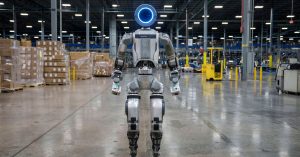Zoom, the company symbol of smart working, supplier of the means that allowed millions of workers all over the world to work from home during the Pandemic, has asked its employees to go back to work in the office. The symbolic importance of the news is evident, and, in fact, de profundis of distance working have been published all over the place. Almost as if the request on the part of the California-based company for all those, working within an 80 kilometer distance from work, to return to the office at least twice a week, in some way sanctions the end of distance working. An excessively catastrophic forecast, just as the scenarios, pronounced immediately after the Pandemic, hypothesizing the complete disappearence of offices, and all their related satellite activities, were excessively optimistic. Smart working is not destined to definitively disappear but it is certain that, outside the logic of the emergency, it poses certain problematics which should be understood and, if possible, solved.
In this sense, the results of a survey, conducted in 34 countries in various continents, by a group of economists from Stanford University, are very revealing. The research (Working From Home Around The Globe 2023) attempted to measure the state of the art of smart working between April and May 2023: it turned out that , on average, full time employees worked from home 0.9 days per week, with significant differences, not so much at the level of types of work, as the geographical area to which employees belonged. The average rose, in fact, to 1.4 days in English-speaking countries, with only 0.7 days in Asia and 0.8 in Europe. Australia topped the league with 1.7 days, followed by the UK (1.5) and the USA (1.4), with Greece and South Korea representing those countries where office working is practically dominant (0.5). In Italy, we have 0.7 days per week. The researchers compared the desire of the workers (on average 2 working days at home) with what companies were prepared to offer (1.1 day). Overall, 66.5% have gone back stably to office working, 25% have obtained a hybrid solution, and only 7.9% have kept up fulltime smart working.
The same Stanford researchers have not given a sole explanation for these geographical differences. Certainly, English-speaking countries have seen greater efforts on the part of trade unions to maintain this benefit: in Canada, federal workers went on strike for two weeks to keep smart working, but succeeded only in obtaining a general commitment to evaluate the question. One interpretation of the phenomenon is particularly stimulating and can be confirmed by the Italian situation: US-type management models have, for many years now, been based on measuring performance and this has enabled companies to be much more “relaxed” about productivity control, even at a distance. In countries, like Italy, where these models have experienced difficulty in catching on, because of the language barrier, fear of being unable to control the employee has produced the “back to the office effect”. In fact, Italian managerial and entrepreneurial culture is still far from implementing data-driven measurement models. More often than not, instead of applying algorhythms, they entrust the task to the activitiy of consultants whose reports tend to confirm the convictions and biases of their clients rather than effectively quantify productivity.
The particular composition of Italian entrepreneurship, made up, as it is, primarily of small to average-sized companies, obviously complicates the situation. However, the fact remains that a correct use of the data is, by now, essential and to continue to avoid doing it will put many companies at risk of being pushed out of the market and, above all, out of the battle for talents. Measuring not only performance in an unbiased way, by means of algorhythms, but also assessing which are the roles and who are the people most efficient in different ways of working (hybrid, remote, in presence) would make for greater organizational agility and better business performance. It requires great ductility and the ability to deal with a complexity and a fragmentation of organizational populations that have never previously been seen. Perhaps this is the true challenge: abandoning the old for the new while still unaware of which organizational model is functioning. A great opportunity for those concerned with human resources and transformation. Let’s hope that these professional families will succeed in finding the vision and the courage to step up their game and really try.
Read the full article here










